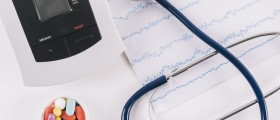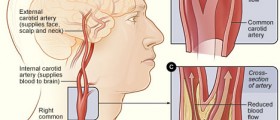
This text will discuss on a surgery named coronary artery bypass graft, and several complication that may arise due to this surgery. This operation is considered as one of the most popular in America and more than 400,000 people underwent this surgery during the 2004. When a person has a blocked arteries or their narrowing in the heart this surgery is performed. It helps by making the blood flow pass more easily and when this is doneheart muscles will have the nutrients and oxygen they need. Coronary artery condition is created when atherosclerotic plaque gathers in the blood supplying artery wall. Activities like smoking and conditions such as diabetes, cholesterol and blood pressure problem help with the gathering of the plaque. This gathering is also very common among old people with some heart problems in the family, and cholesterol is the main component of this plaque. When narrowing occurs the usual suspect is the atherosclerosis process. When the blood doesn't reach the final destination along with other important things, oxygen in not supplied either. If the narrowing is considerate, 50-70%, this problem can be very grave and serious.
One quarter of persons experiencing this problem do not develop chest pain, but others do. Chest pain happens when oxygen is not delivered. Complete blockage of the artery can occur if a blood clot is made on the plaque. There is a risk of heart attack for the individuals with angina, which also depends on the narrowing because the extreme narrowing produce angina at rest and accelerated angina. There is also the possibility of unstable anginaproduction. When talking about the recovery period, seven to ten days will take for a patient to leave the hospital after the surgery. Support stocking will be needed for the first five to six weeks. Patients will have to avoid lifting heavy items and driving the car but after six weeks they can return to their work. Patient will have to attend a program called cardiac rehabilitation program which lasts for 12 weeks and includes some exercises, like stress exercises. Also a patient will have to eliminate smoking, lower blood cholesterol maintain blood pressure and diabetes, and decrease dietary fat and weight.
Risks
Risks include heart attack (5 to 10 %), death (3 to 4 %), bleeding (5 %) and stroke (1 to 2 %, especially in old people) but lung complications and chest infection are also possible problems after this surgery. If a person has more than 70 years, diabetes, chronic kidney failure and lung disease, problem with left main coronary artery and poor heart muscle function, that person has the greatest chances for developing coronary artery disease. Women are more affected by this disease and they are affected approximately ten years before men.

















Your thoughts on this
Loading...